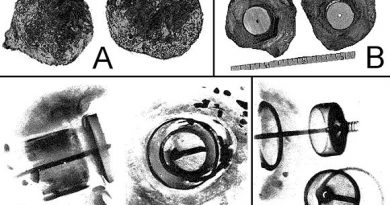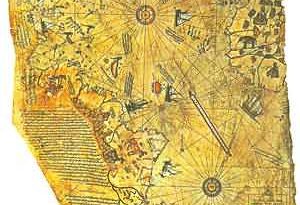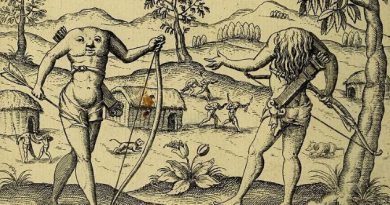Unlocking Stonehenge’s Mysteries
By Emma Parkins
Stonehenge is a British wonder of the ancient world – it’s also as familiar a part of our landscape as the White Cliffs of Dover.
It’s such an iconic sight, we tend to forget that two fundamental questions remain – when was it built and what was it for?
For hundreds of years, these questions have intrigued and frustrated antiquarians and visitors alike. Remarkably, in the next fortnight, we might just have the beginning of some answers.
On Monday, the first excavation to take place at Stonehenge in nearly half a century will start.
For Dr Simon Thurley, chief executive of English Heritage, this is a truly unique moment: “Very occasionally, we have the opportunity to find out something new archeologically – we are at that moment now.
“We believe that this dig has a chance of genuinely unlocking part of the mystery of Stonehenge.”
Irresistible questions
The men behind this historic event are Professor Geoff Wainwright and Professor Tim Darvill. Between them they have undertaken hundreds of excavations, but nothing so far has compared to this. I’d regard it as the summit of my professional career,” said Professor Wainwright
“To do an excavation at Stonehenge is very special indeed.”
It certainly is. So why are the professors being allowed to dig a hole in this most hallowed of spots?
Stonehenge is a breathtaking piece of engineering, created with only the most basic technology. Most visitors find themselves joining in the eternal speculation about what might have driven our ancestors to build it. To many, it makes sense to see Stonehenge as a temple to the Sun, built by a farming population for whom light and heat were vital for survival.
Key dates
Recently, Professor Mike Parker Pearson offered a dramatically different view – his work at the nearby Neolithic settlement of Durrington Walls has led him to believe that Stonehenge was a place not of life but of death – an opportunity for people to commune with the spirits of their ancestors. Certainly, Stonehenge must have been a site of great importance for over a thousand years.
But in many ways, it’s premature to wonder why it was built before we can answer the question “when?”.
Perhaps surprisingly, the stone circle didn’t begin with the great sarsen stones, but with the smaller Welsh bluestones – and it’s the remains of the original bluestone structure that Darvill and Wainwright hope to date. This will do much more than help us understand Stonehenge; it will shed light on a mysterious period of British pre-history.
“This excavation will give us a crucial date in the complex chronology of the monument that will allow us to relate more precisely what’s happening here to what’s happening in the rest of pre-historic Britain,” said Dr Thurley. “It asks important questions about Stonehenge and meets the clear aims of our research framework.”
Important though dating Stonehenge is, it’s not the only thing on Darvill’s and Wainwright’s minds. Like most students of Stonehenge, they have developed their own theory as to why it was built.
They believe that it wasn’t just chance that brought the bluestones to Stonehenge first, but power – to them it’s the bluestones that made Stonehenge the greatest henge of them all. Over the last six years, the professors have concentrated their research on Carn Menyn – a lonely and atmospheric spot in Pembrokeshire’s Preseli hills. It’s from here that the bluestones began their 200-mile journey, 4,500 years ago.
The journey to Stonehenge was such an extraordinary feat, archaeologists still can’t agree on how it was done. What seems certain is that something very powerful must have driven it. In this part of Wales, the healing power of the bluestones is the stuff of myth and legend. Darvill and Wainwright have discovered extraordinary similarities between the local Bedd Arthur bluestone circle, and the circle at Stonehenge.
This, combined with growing evidence of illness and injury from human remains unearthed around Stonehenge, has led the team to a fascinating new theory. The researchers believe that the bluestones were healing stones, and that they were transported to Stonehenge because people believed they had a magical ability to cure. Once they arrived, Stonehenge was transformed from a local henge to a centre of power and influence – a “Neolithic Lourdes” – drawing in the sick and injured from around Britain and beyond.
It remains to be seen if this theory can help unlock the secret of Stonehenge, but the professors hope this excavation will help them test it. As a Welshman, Geoff Wainwright is glad to see his native bluestones come out from the shadow of their English sarsen neighbours.
As to the excavation, both he and Tim Darvill are keeping an open mind. As Professor Darvill says: “I think that we really are stepping into the unknown – we don’t know what we will find down there, because it’s such a long time since anyone had a look.” BBC Timewatch will follow the progress of the Stonehenge dig over the course of the next two weeks. Catch daily text and video reports on the programme’s website. A BBC Two documentary will be broadcast in the autumn and will detail the findings of the investigation
From Wikipedia :
Stonehenge is a prehistoric monument located in the English county of Wiltshire, about 8 miles (13 km) north of Salisbury. One of the most famous prehistoric sites in the world, Stonehenge is composed of earthworks surrounding a circular setting of large standing stones. Archaeologists believe that the standing stones were erected around 2200 BC and the surrounding circular earth bank and ditch, which constitute the earliest phase of the monument, have been dated to about 3100 BC. The site and its surroundings were added to the UNESCO’s list of World Heritage Sites in 1986 in a co-listing with Avebury henge monument, and it is also a legally protected Scheduled Ancient Monument. Stonehenge itself is owned by the Crown and managed by English Heritage while the surrounding land is owned by the National Trust.



